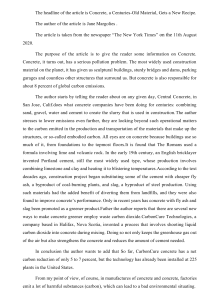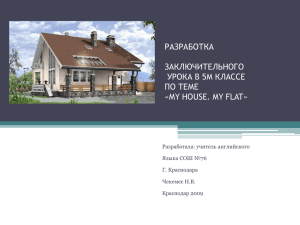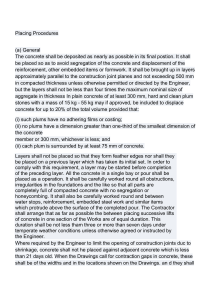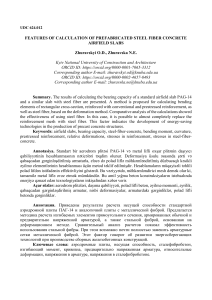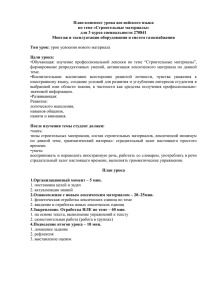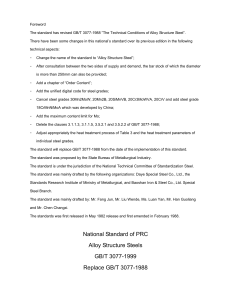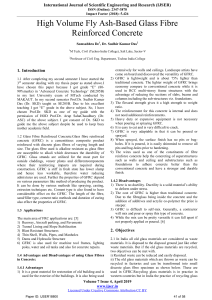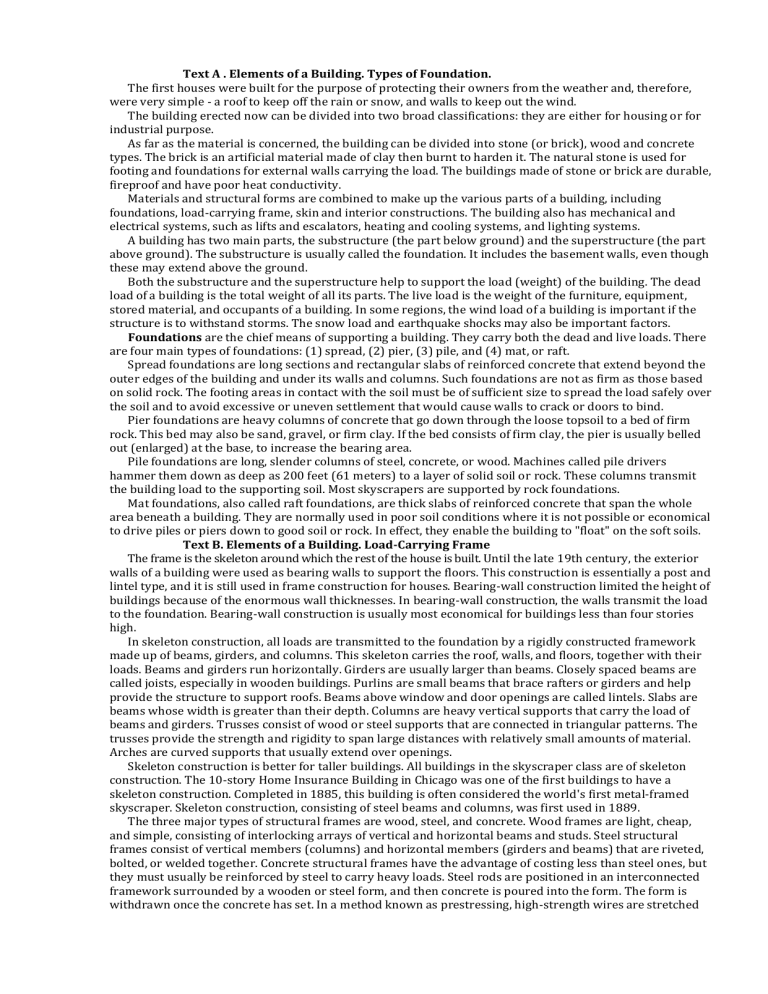
Text A . Elements of a Building. Types of Foundation. The first houses were built for the purpose of protecting their owners from the weather and, therefore, were very simple - a roof to keep off the rain or snow, and walls to keep out the wind. The building erected now can be divided into two broad classifications: they are either for housing or for industrial purpose. As far as the material is concerned, the building can be divided into stone (or brick), wood and concrete types. The brick is an artificial material made of clay then burnt to harden it. The natural stone is used for footing and foundations for external walls carrying the load. The buildings made of stone or brick are durable, fireproof and have poor heat conductivity. Materials and structural forms are combined to make up the various parts of a building, including foundations, load-carrying frame, skin and interior constructions. The building also has mechanical and electrical systems, such as lifts and escalators, heating and cooling systems, and lighting systems. A building has two main parts, the substructure (the part below ground) and the superstructure (the part above ground). The substructure is usually called the foundation. It includes the basement walls, even though these may extend above the ground. Both the substructure and the superstructure help to support the load (weight) of the building. The dead load of a building is the total weight of all its parts. The live load is the weight of the furniture, equipment, stored material, and occupants of a building. In some regions, the wind load of a building is important if the structure is to withstand storms. The snow load and earthquake shocks may also be important factors. Foundations are the chief means of supporting a building. They carry both the dead and live loads. There are four main types of foundations: (1) spread, (2) pier, (3) pile, and (4) mat, or raft. Spread foundations are long sections and rectangular slabs of reinforced concrete that extend beyond the outer edges of the building and under its walls and columns. Such foundations are not as firm as those based on solid rock. The footing areas in contact with the soil must be of sufficient size to spread the load safely over the soil and to avoid excessive or uneven settlement that would cause walls to crack or doors to bind. Pier foundations are heavy columns of concrete that go down through the loose topsoil to a bed of firm rock. This bed may also be sand, gravel, or firm clay. If the bed consists of firm clay, the pier is usually belled out (enlarged) at the base, to increase the bearing area. Pile foundations are long, slender columns of steel, concrete, or wood. Machines called pile drivers hammer them down as deep as 200 feet (61 meters) to a layer of solid soil or rock. These columns transmit the building load to the supporting soil. Most skyscrapers are supported by rock foundations. Mat foundations, also called raft foundations, are thick slabs of reinforced concrete that span the whole area beneath a building. They are normally used in poor soil conditions where it is not possible or economical to drive piles or piers down to good soil or rock. In effect, they enable the building to "float" on the soft soils. Text B. Elements of a Building. Load-Carrying Frame The frame is the skeleton around which the rest of the house is built. Until the late 19th century, the exterior walls of a building were used as bearing walls to support the floors. This construction is essentially a post and lintel type, and it is still used in frame construction for houses. Bearing-wall construction limited the height of buildings because of the enormous wall thicknesses. In bearing-wall construction, the walls transmit the load to the foundation. Bearing-wall construction is usually most economical for buildings less than four stories high. In skeleton construction, all loads are transmitted to the foundation by a rigidly constructed framework made up of beams, girders, and columns. This skeleton carries the roof, walls, and floors, together with their loads. Beams and girders run horizontally. Girders are usually larger than beams. Closely spaced beams are called joists, especially in wooden buildings. Purlins are small beams that brace rafters or girders and help provide the structure to support roofs. Beams above window and door openings are called lintels. Slabs are beams whose width is greater than their depth. Columns are heavy vertical supports that carry the load of beams and girders. Trusses consist of wood or steel supports that are connected in triangular patterns. The trusses provide the strength and rigidity to span large distances with relatively small amounts of material. Arches are curved supports that usually extend over openings. Skeleton construction is better for taller buildings. All buildings in the skyscraper class are of skeleton construction. The 10-story Home Insurance Building in Chicago was one of the first buildings to have a skeleton construction. Completed in 1885, this building is often considered the world's first metal-framed skyscraper. Skeleton construction, consisting of steel beams and columns, was first used in 1889. The three major types of structural frames are wood, steel, and concrete. Wood frames are light, cheap, and simple, consisting of interlocking arrays of vertical and horizontal beams and studs. Steel structural frames consist of vertical members (columns) and horizontal members (girders and beams) that are riveted, bolted, or welded together. Concrete structural frames have the advantage of costing less than steel ones, but they must usually be reinforced by steel to carry heavy loads. Steel rods are positioned in an interconnected framework surrounded by a wooden or steel form, and then concrete is poured into the form. The form is withdrawn once the concrete has set. In a method known as prestressing, high-strength wires are stretched and held tight while concrete is set around them. In this way a concrete span as long as 100 feet (30 m) can be attained. Text C. Elements of a Building. Skin and Interior Construction. The skin of a building consists of both transparent elements (windows) and opaque elements (outside walls). Windows are traditionally glass, although plastics are being used, especially in schools where breakage creates a maintenance problem. Most parts of a window come from a lumber mill, already cut in the proper sizes. Window sashes are made of wood or metal, usually either aluminum or lightweight steel. Walls are built to enclose areas and carry the weight of floors and roofs. The wall elements, which are used to cover the structure and are supported by it, are built of a variety of materials: brick, precast concrete, stone, opaque glass, plastics, steel, and aluminum. Wood is used mainly in house construction; it is not generally used for commercial, industrial, or public buildings because of the fire hazard. Interior construction includes (1) walls, (2) floors and (3) doors. Rooms are made by building inside walls after the outside walls have been attached to the foundation. Inside walls, also called partitions, have studs and must be supported by plates, joists, and girders. If plaster is to be applied, the interior walls must first be covered with lath, or strips of wood, metal, or plasterboard. To provide for greater flexibility within buildings, movable or easily disassembled partitioning systems are used. Such partitions may be metal, prefabricated plasterboard components, accordion like rolling curtains, or, if noise is a problem, leaded curtains that move either horizontally or vertically. Most houses have several different kinds of doors, each designed to address a particular need. All doors are classified as either exterior or interior models. Typical weather-tight exterior doors (тут были гиперссылки?!) include the front entry door, back door, French doors, glass sliders and patio doors. Exterior doors provide security and maintain a comfortable indoor climate. They are made to be particularly strong, weather-resistant and energy efficient. In addition, a front door is usually designed to project a handsome first impression. Lighter-weight interior doors are used between rooms, on closets and in similar applications. They include folding doors, bypass doors, and conventional hinged doors. Bypass door is a door that has 2 or more sections. They can slide from each direction on an overhead track. Conventional hinged doors may be either right or left handed. A door that opens toward you and has the door knob on the right is right handed. A door hinged on the opposite side is left handed. Text D. Elements of a Building. Roofs and Floors A roof is the covering on the uppermost part of a building. Depending upon the nature of the building, the roof may also protect against heat, against sunlight, against cold and against wind. There are so many different types of roofs available. Any discussion of different types should include two aspects of roof type the shape of the roof itself and the roofing material used to cover it. The shape is determined by the design of the house. The materials used are also quite varied and may be determined by things like cost, climate, neighborhood covenants, local building codes, or the like. Common types of roofs include lean-to, flat, front or side gabled, cross gabled, pyramid, mansard, tent, hip and more. These are all descriptions of the roof shape, but within each shape, there are many variations as well. Another way to look at roof types is the roofing materials themselves. Examples of commonly used materials include asphalt shingle, wood shake, tile, and manmade versions of these materials. Tile, metal, and other man made materials tend to cost a bit more but also tend to be the most durable. Traditional materials such as asphalt shingles and wood shakes are usually less expensive but not quite as durable. Floors divide the building into stories. They form the basic structural components of a building, together with ceilings and walls; the construction of the floors in a building depends on the basic structural frame that is used. A wide variety of materials is used in modern floors. Concrete and wooden floors are usually covered with carpets, rugs, and other floorings for aesthetic reasons and to increase durability of the surface, absorption of sound, and ease of maintenance. Wood is still extensively used in residences, especially as parquets. Tiles also play an important role in modern buildings and homes. Of all floor coverings, they are the most resistant to water and humidity, and they are easy to clean. Glazed ceramic tiles are used wherever highly sanitary conditions are required, such as in hospitals, laboratories, swimming pools, and public toilets. In the home, tiles are used on the floors and walls of kitchens and bathrooms. Synthetic, resilient floorings include linoleum, asphalt tiles, vinyl asbestos and pure vinyl tiles and rubber.

